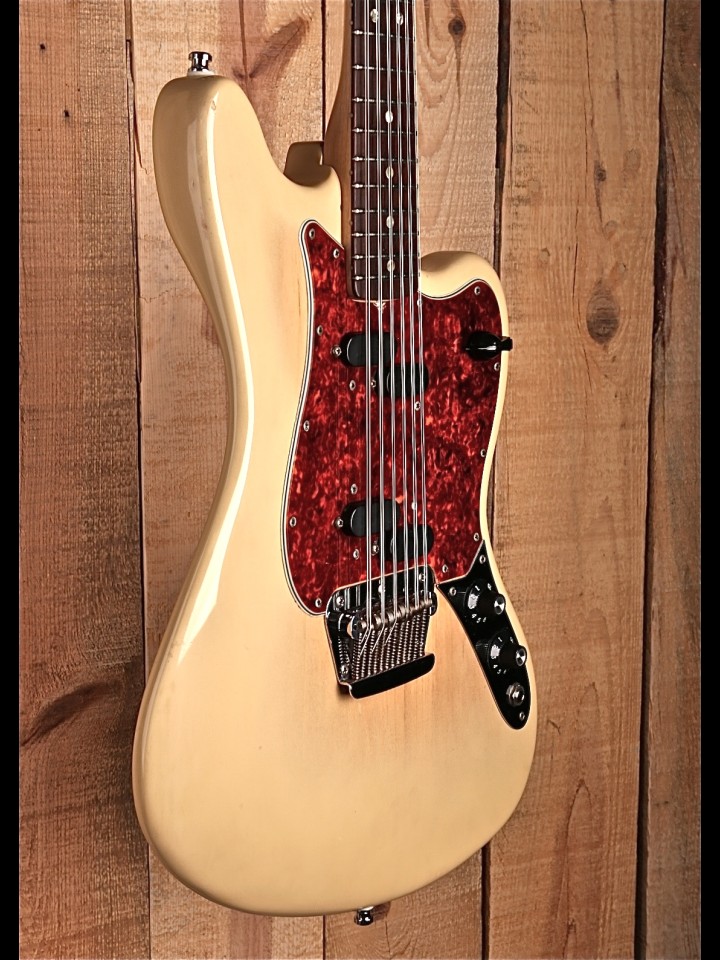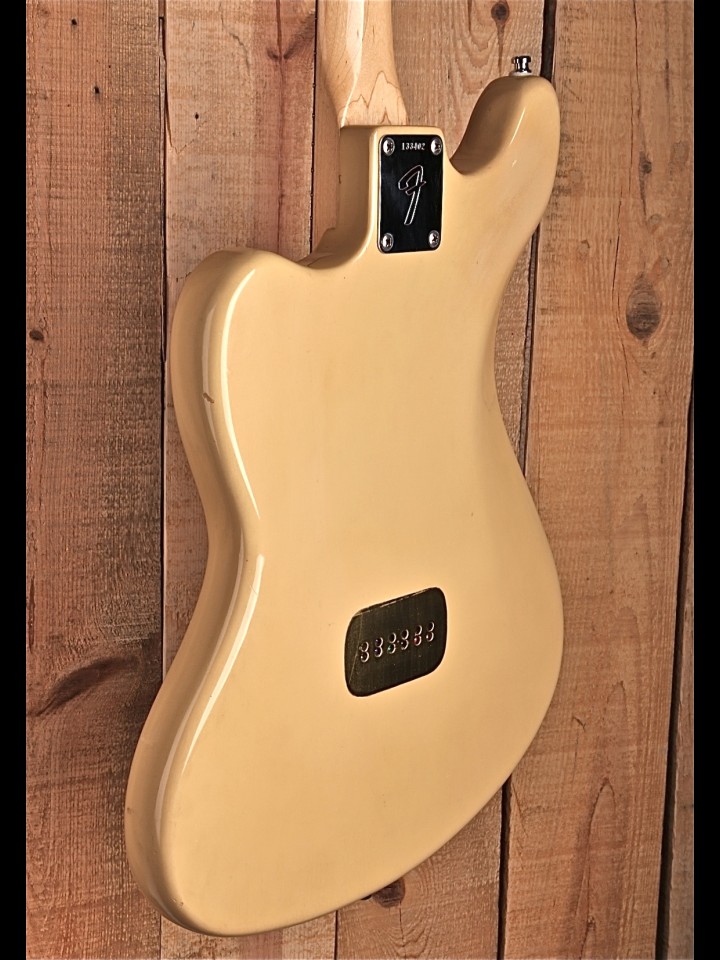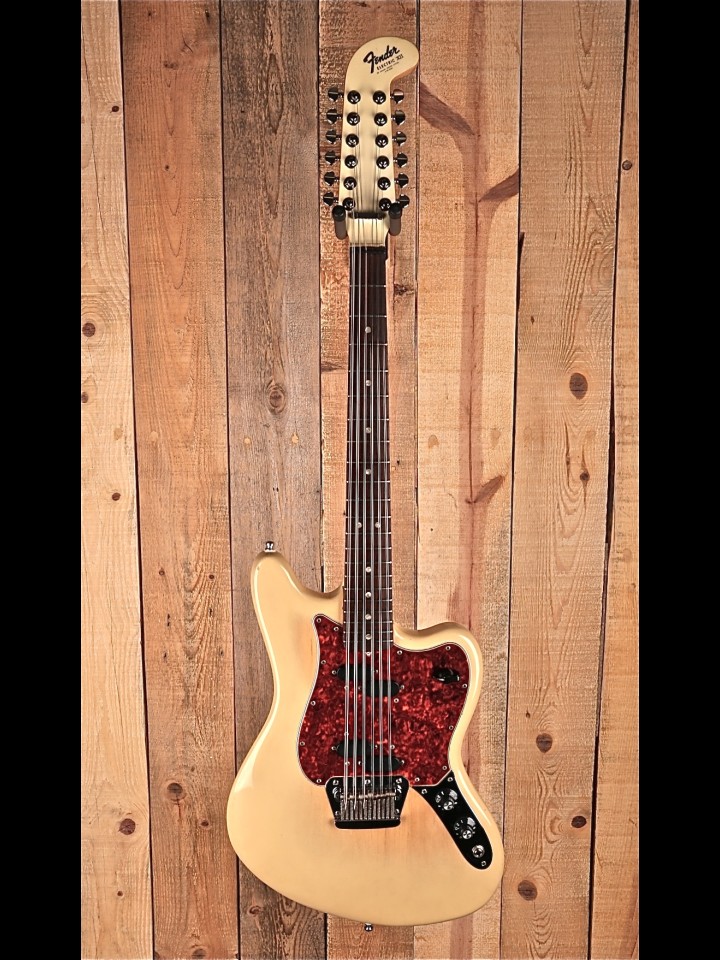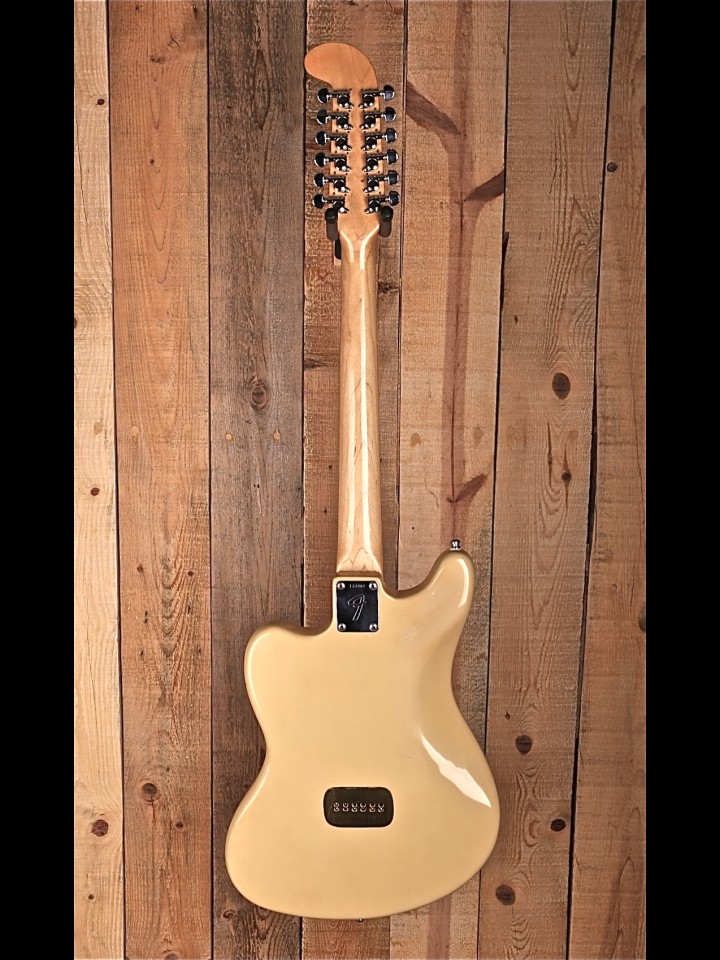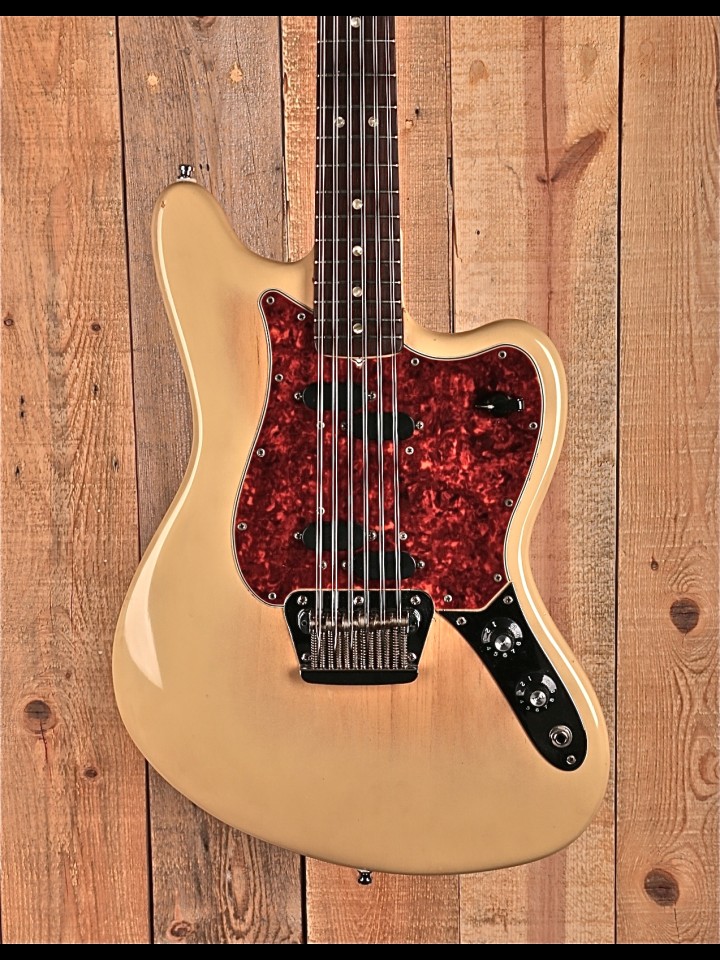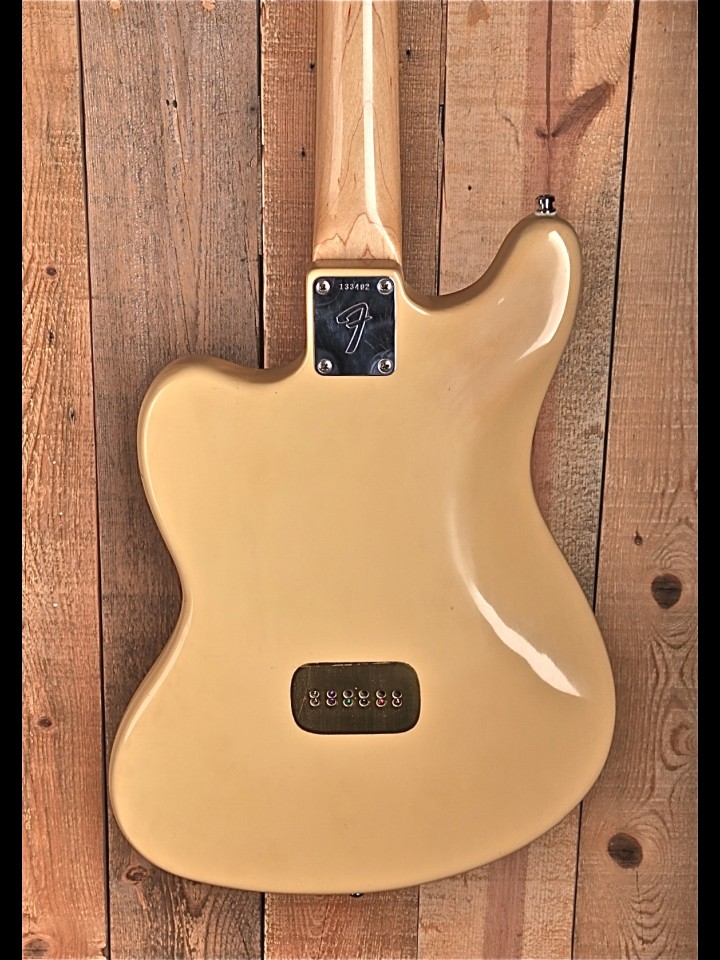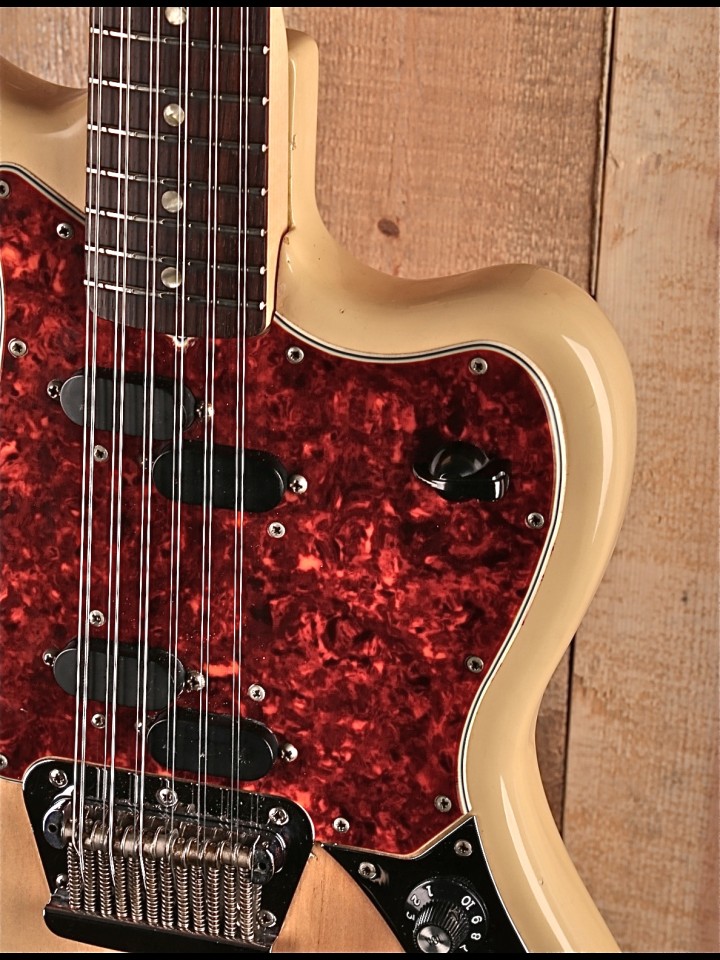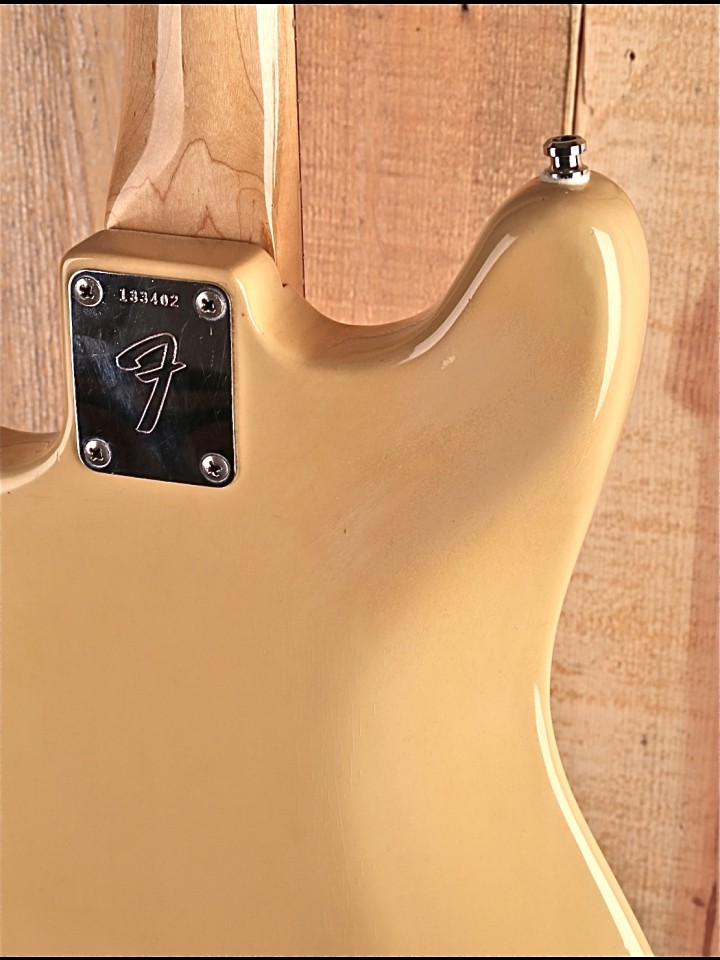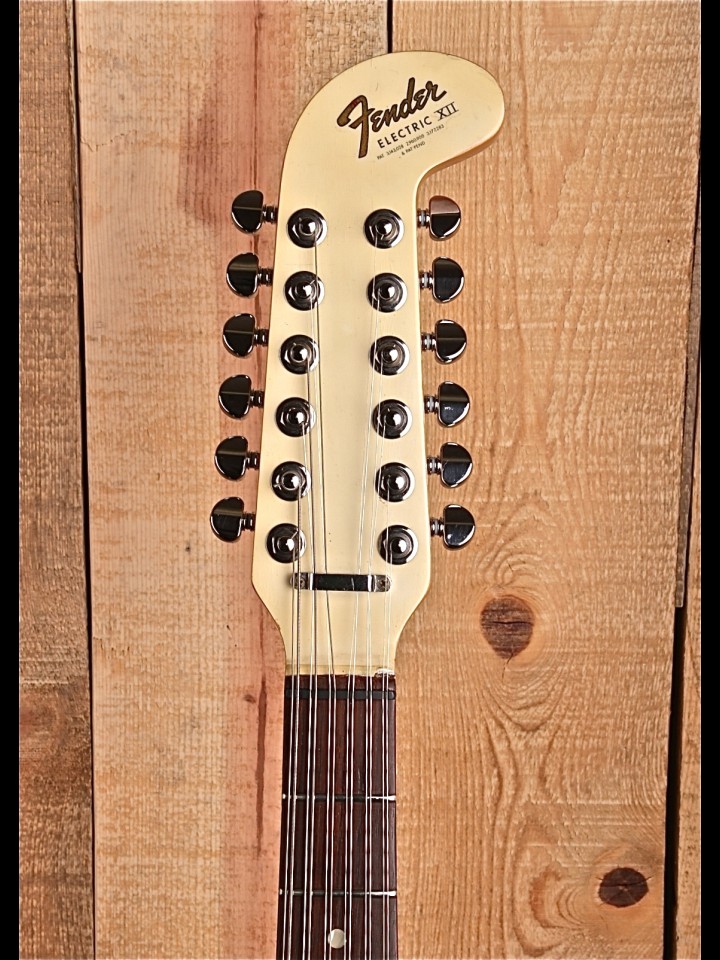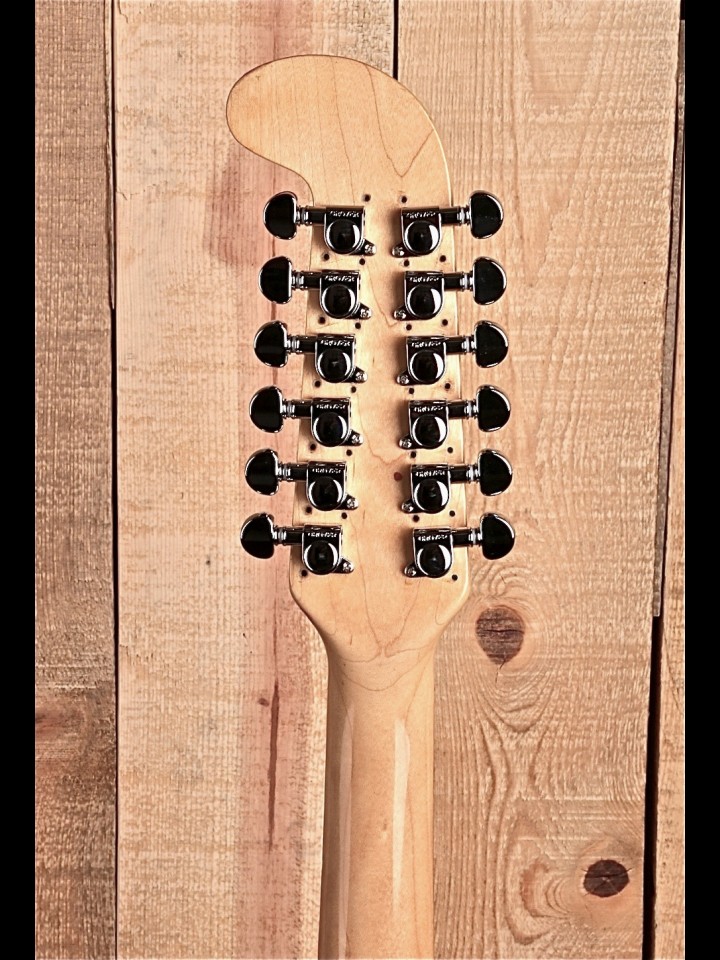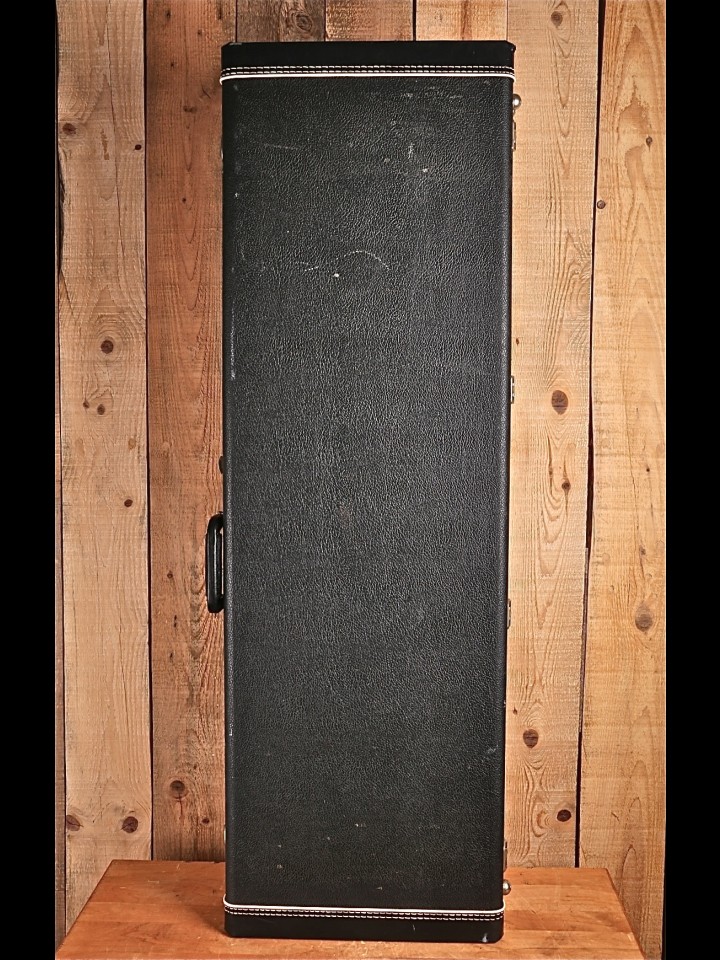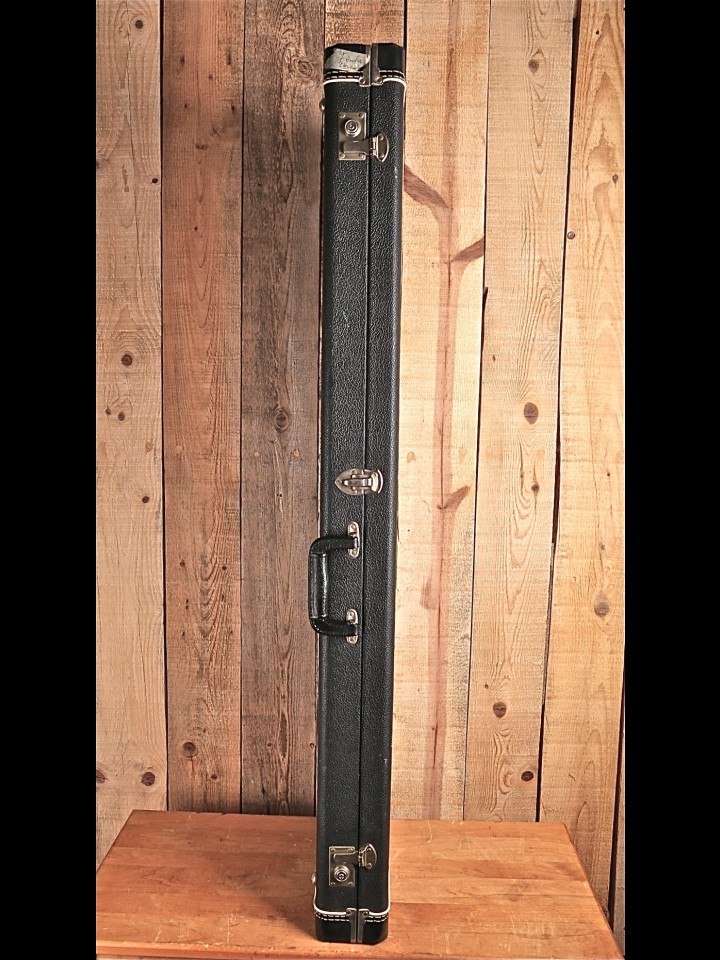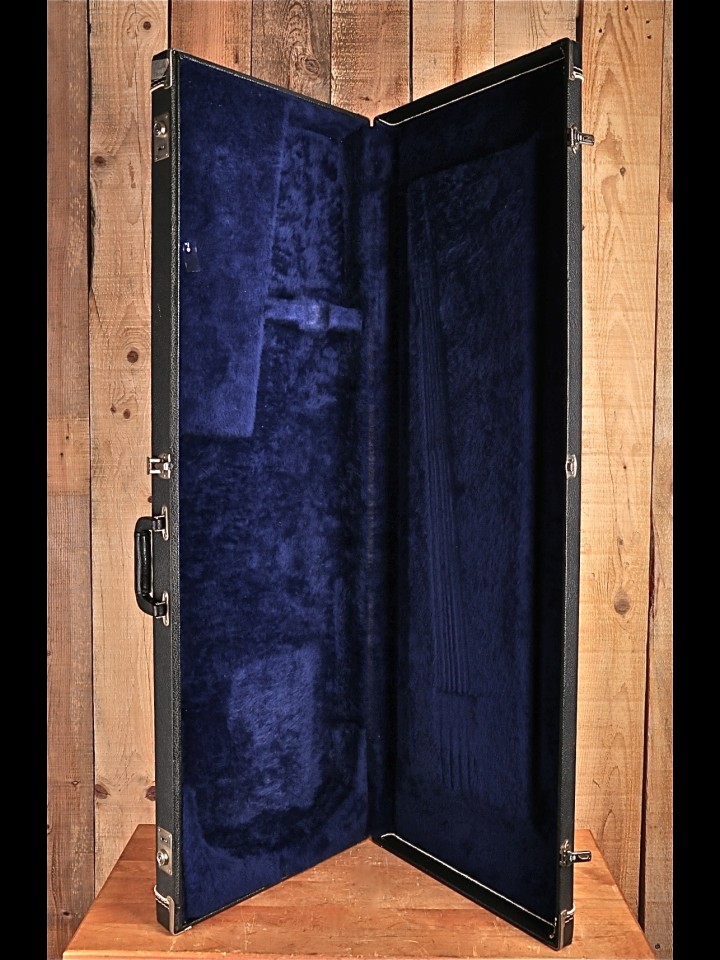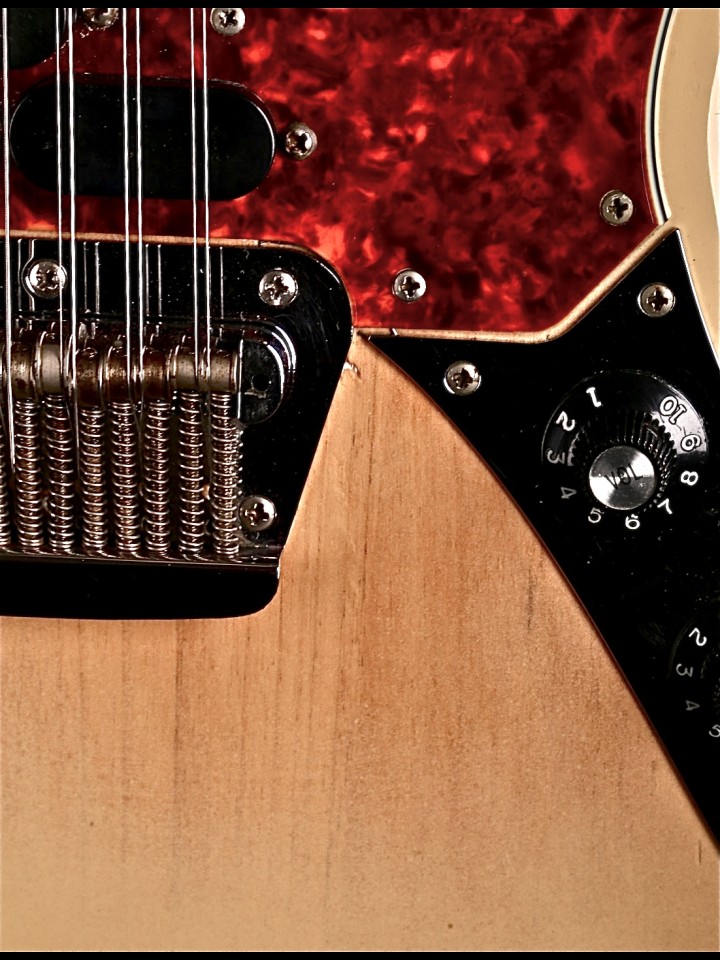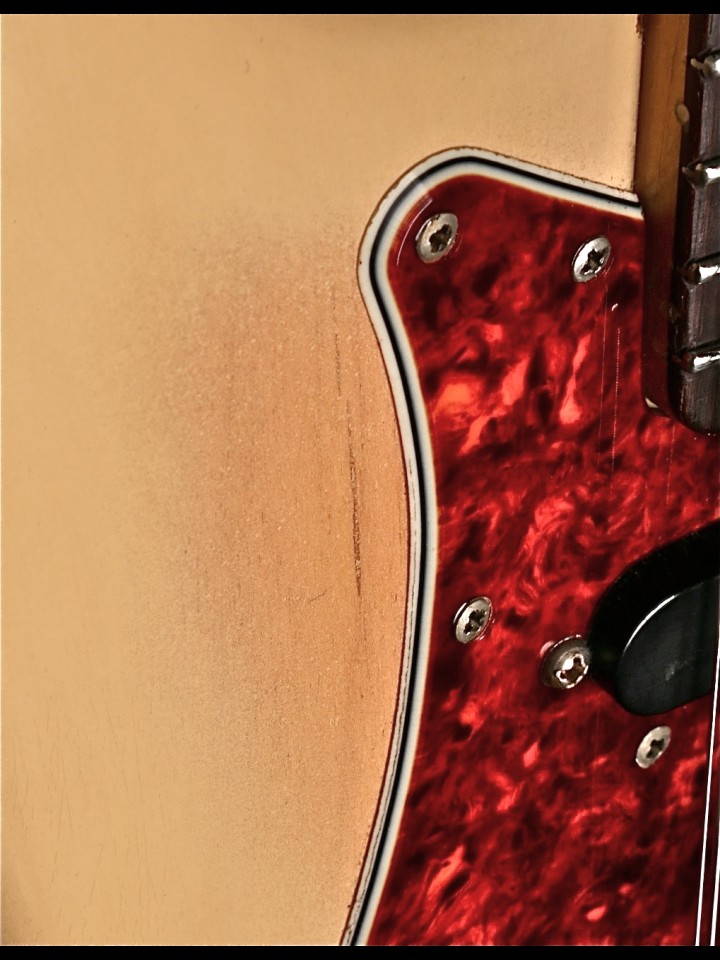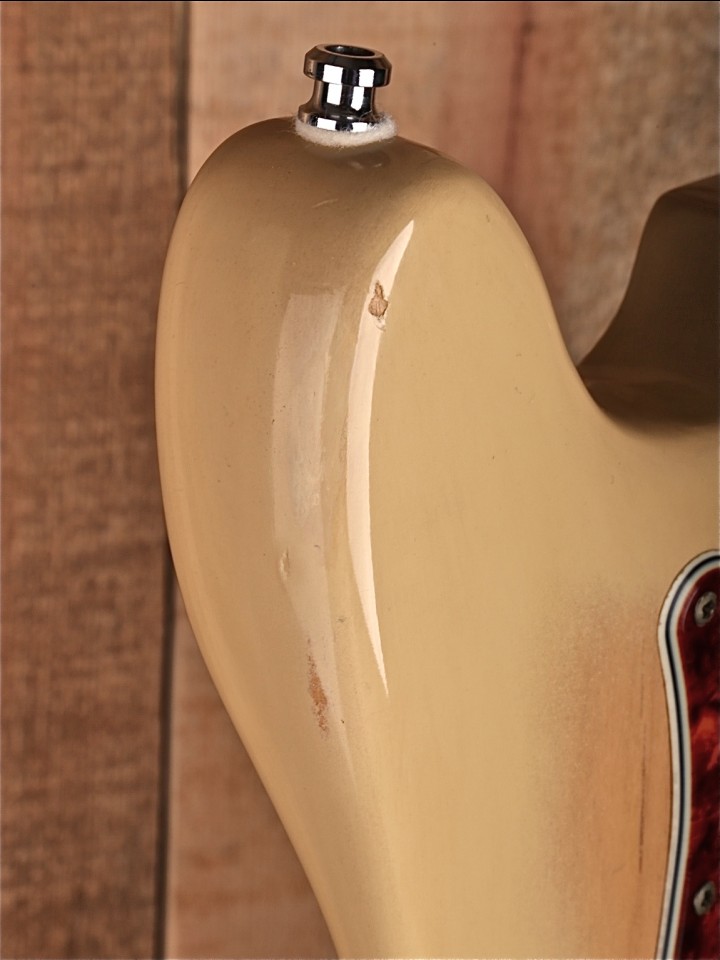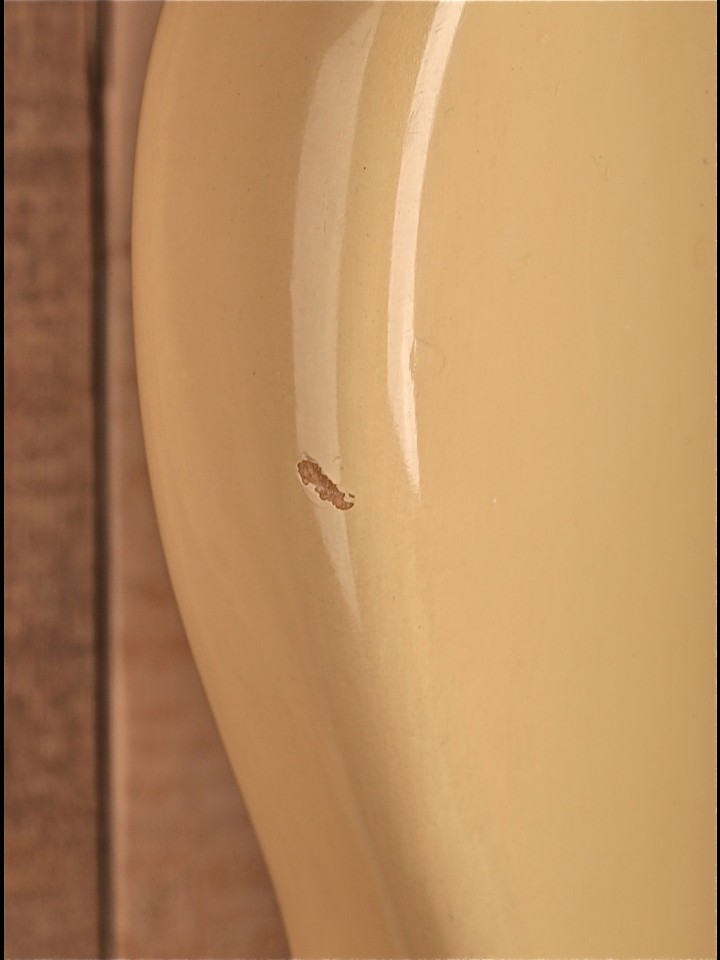1966 Electric XII (Re-Fin)
Despite having such enviable history as being Jimmy Page’s creative conduit for "Stairway to Heaven" and "When the Levee Breaks," the Fender Electric XII has largely existed in obscurity for much of the guitar-playing public since it was unceremoniously discontinued in 1969. Yet, its distinctive chime permeated the musical landscape in the late ‘60s and beyond: Eric Clapton used an Electric XII on “Dance the Night Away” on Cream’s classic, Disreali Gears. Pete Townsend was known to have used one on “Sparks” and “Underture" when recording Tommy. The Electric XII appeared on recordings from the Beach Boys (e.g., “Sloop John B”), Herb Alpert and the Tijuana Brass (“Wade in the Water”), the Velvet Underground (“ Beginning to See the Light” and “What Goes On”), Tom Petty was known to have used one in 2006 (to the horror of all Rickenbacker fans!), and the Electric XII even pops up in the famous “but this one goes to 11” scene of This is Spinal Tap—let’s face it, it’s hard to be more classic than being in Spinal Tap!
Rock history aside, the Fender Electric XII is a fantastic and enchanting instrument, which makes its original lack of commercial success a bit surprising. Granted, 12-string guitars in general are a bit of a niche market, with only a fraction of instruments sold relative to 6-string guitars. Yet, for anyone familiar with the frustrations inherent with Rickenbackers (the dominant vintage 12-string make), the simple and intuitive design of the Electric XII is quite refreshing and arguably, well, just better! This is especially true of the bridge and its easily accessed individual saddles—these not only allow for more accurate intonation, but they are compensated in height to level the octave course of strings with the normal string course. Meanwhile, the more conventional nut width provides a less cramped fretting experience. Finally, the split single coil pickups deliver plenty of unique chime to replicate whatever vintage folky 12-string tone you might be after, while the four way switch provides some unusual out-of-phase combination should you wish to explore less conventional tone. All in all, the Electric XII is without question one of the most comfortable, dynamic, and, up until recent years, under-appreciated electric 12-string rarities one could hope to find on the vintage market. – L. Petsch, (additional sources: fender.com, guitarhq.com)
Condition:
Though it certainly exudes loads of the all-too-desirable "cool factor," absolutely killer jangle tone, and historical mojo mentioned above, this 1966 Electric XII has been refinished (more on this below) and modified to the point that it would most definitely be characterized as a player’s guitar, not a collector’s centerpiece. Whenever one encounters a refinished and/or modified instrument, one must be prepared for the forensic journey that invariably ensues when trying to establish what all has been done to the guitar. Incidentally, as tempting as it may be to rant about the guitar’s current state, it is a fool’s errand to question why this and that was done—it simply was, and the important thing to focus on at this point is whether the instrument is still properly functioning and to restore it to its most original state as much as it is practical to do so! Thus, we have done what is necessary to make this guitar its best in the course of our preparation; and, in keeping with our practice of honest and candid representation of what we sell, here is a thorough account of what we encountered in evaluating this guitar:
From what we can determine, this guitar originally had an Olympic White finish, as the headstock appears to have the original matching finish. However, the body now sports a sort of awkward Olympic White/Blonde burst! This top layer of finish (and possibly all of the body finish) appears to be polyurethane. Somewhere during this process, an enlarged brass string anchor was installed on the back of the guitar. Given the texture and luster of its finish, we suspect that the back of the neck, and possibly the face of the headstock, have also been over-sprayed with the same polyurethane. The finish on the body and the neck do have a consistent appearance under black light.
Perhaps the most puzzling element of the existing finish is the occasional presence of red paint in various areas of the body: There are a few raised red patches on the neck near the neck screws, some corresponding patches in the neck cavity, and some larger patches on the body beneath the neck plate, as well as on the neck plate itself. Additionally, the back of the pickguard, along with the pickups, pots, and wiring have flecks and misting of red. The red paint is most present and consistent in the pickup cavities and control cavities, where we also see some random splotches on the shielding plates. Needless to say, the nature of this work, points to a very sloppy paint job! It is clear that someone either didn’t bother to remove the pickguard when spraying the paint; or, more likely, considering an old splice we see leading into the control cavity, they removed the pickguard but then left it exposed in close proximity to the spray area.
Regardless, based on periodic accounts of some customers who, for whatever reason, chose to refinish their now vintage guitars in their parents’ garage as teenagers back in the ‘50s, ‘60s, or ‘70s, it is clear that someone without a lot of experience in finishing decided to paint this Electric XII red at some point. What is not immediately clear is whether this person actually stripped the body, or chose to paint over an existing Olympic White finish. Though it would be difficult (if not impossible) to prove, there is some reason to posit that what we see today—a curious mixture of Olympic White-ish color with some oddly-shaped milky patches of exposed wood grain—is what remains of the original finish after a sloppy, botched red overcoat was later removed. For instance, in contemplating the scenario where an inexperienced person decides to repaint a guitar, it is quite understandable that this individual would not have the wherewithal or skill to strip and properly prepare the body. Meanwhile, in sanding off a layer of paint, it is easy to see how even an experienced person could burn through the thin original paint below, partially exposing wood grain. Then, given how difficult it can be to match color, that person just chose to apply an overcoat, rather than touching up the exposed bits. It is otherwise difficult to appreciate a choice to have such an oddly shaped “burst!” Be that as it may, we cannot make any claim that the Olympic White-ish finish that we see is original, we can only say with authority that the finish of this guitar has manifestly been modified or molested (depending on how severe your attitudes on such matters may be).
Finish conjecture aside, we also suspect that the back of the neck was slimmed/re-contoured prior to being refinished, as the neck depth is fairly thin. The notion that the neck contour was reduced is potentially supported by fact that two minor cracks developed on the middle of the back of the neck that appear to be adjacent to the truss rod channel when we were clamping some loose frets. Fortunately these cracks were very minor and easily stabilized and smoothed, such one could easily confuse them for wood grain now. Meanwhile, as alarming as all this may sound, the neck shows no signs of being unstable.
With these most significant modifications disclosed, there are several other modifications to note: The original F Stamp tuning machines (which are present) have been replaced with Grover Rotomatics. The nut has been replaced with a black nut (likely graphite). There is a strip of touch-up or patch where the headstock meets the finish on the headstock along with some faint swirls (further evidence that the headstock was over-sprayed with the rest of the neck and body). Schaller strap locks have been added—the locking strap attachments are not present, and the button on the bottom was relocated closed to the front of the body. The jack has been replaced but all other electrical components appear to be original. Finally, the guitar has been re-fretted with medium jumbo frets. The frets have a lot of mass and have been fully redressed in the course of our setup work. GOOD Condition.
- Offset Double Cutaway Solidbody
- Alder Body
- Non-Original Gloss Polyurethane Body Finish
- Maple Neck (Stamped”12MAR66B”)
- Slim C Neck Carve
- Rosewood Fingerboard
- 21 Frets
- Mother of Pearl Dot Fingerboard Inlays
- “Hockey Stick” Headstock
- Olympic White Headstock Finish
- Non-Original Gloss Polyurethane Gloss Neck Finish
- Non-Original, Enlarged Rear Mounted Brass String Anchor Plate
- Fixed Bridge with Twelve Individual Saddles
- Tortoiseshell Pickguard
- 1 5/8” Nut Width
- 25 1/2” Scale Length
- Dual Split Single Coil Pickups with Black Covers
- 4-Way Rotary Pickup Selector (Neck Pickup, Bridge Pickup, Combined, Combined out of Phase)
- Master Volume and Master Tone Controls
- Stackpole 1 Meg Potentiometers (one is dated 41st week of ’65, the other is dated ’65 with week obscured)
- Non-Original Rectangular Hardshell Case
| Brand | FENDER |
| Model | ELECTRIC XII |
| Serial Number(s) | 133402 |


